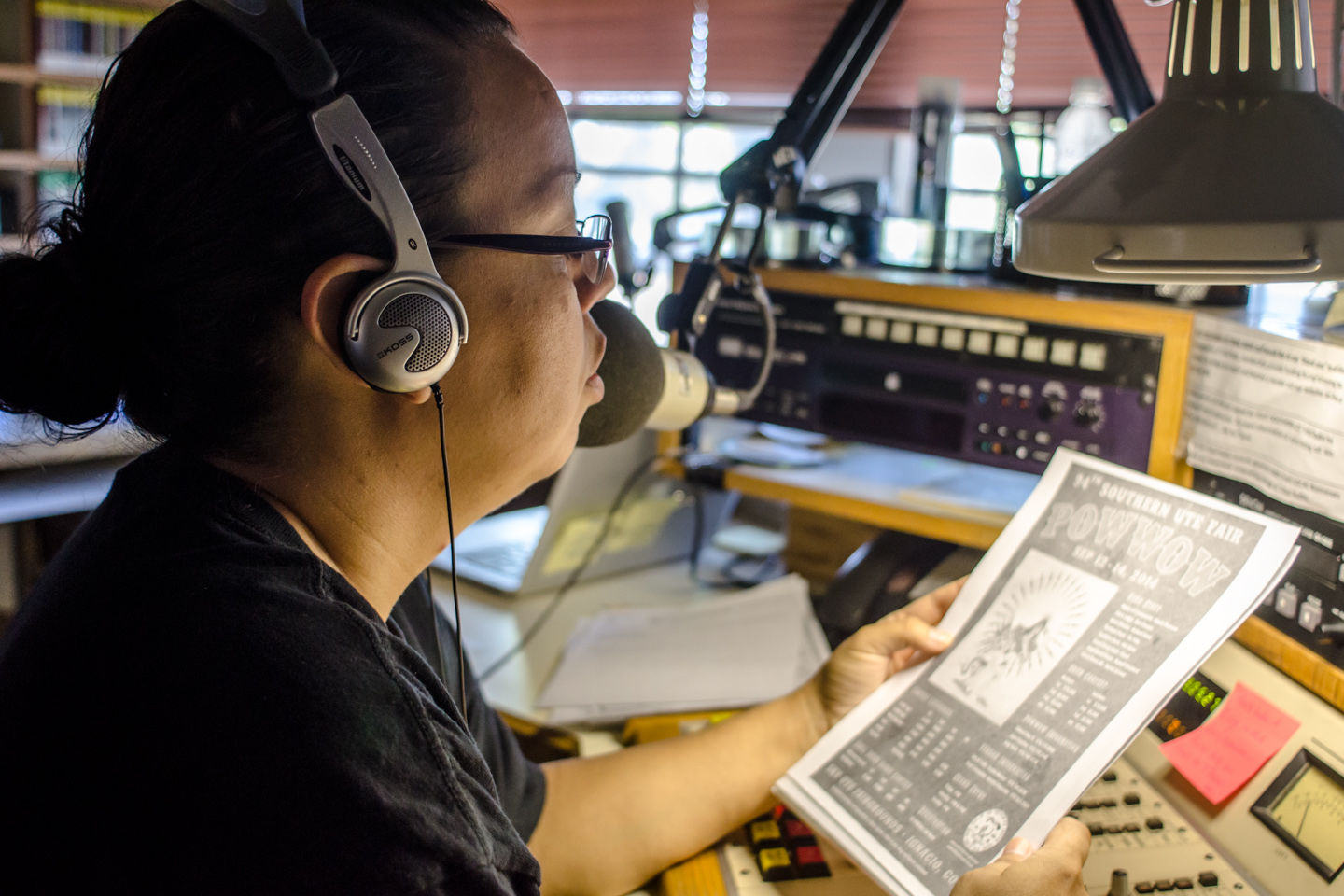Great expectations lay along the horizon of KSUT Public Radio as the station clears the path for its upcoming future involving improved services for the community, while staying persistent in creating a strong legacy for the generations to come.
Since its beginning, KSUT has broadcasted news to the community through airwaves. After the station split its FM transmission signal into two during the year 2000, the public was able to gather more information not only through Tribal Radio, but also Four Corners Public Radio. This at the time was a major stepping-stone for the station. Nowadays, KSUT is looking at improving its ways of expanding services to the public, providing listeners with various sources of digital access as the technology continues to rapidly evolve.
Rob Rawls, KSUT’s Director of Administration, gave details on how KSUT plans to utilize digital technology for its coming years.
“All of our current equipment is twenty years old and wired together with copper sound wiring,” he said. “Soon, all equipment will be linked through a network in our new studio. Right now, Tribal Radio has a transmitter stationed in Farmington, which we broadcast here in Ignacio. We are using the Internet to transmit our signal to that transmitter, and that has truly helped us with that improvement. Streaming through the Internet allows listeners to listen to KSUT anywhere around the world.”
KSUT has had ongoing support from the Tribe, who in return provides assets for the station with the expectations of keeping it running. In order to further establish its legacy, KSUT has developed the Carlos Sena Legacy Fund, named after KSUT’s former general manager. The fund essentially creates an endowment that will support KSUT’s operations in the future, staying true to Sena’s vision and leadership.
“The fund is about sustainability in local programming,” said Tami Graham, Capital campaign coordinator. “It’s to keep the station up to date with technology and requirements for the station. The money ends up paying for national public radio programming, new staff, and renovations of the new media center. We want listeners to know about the long-term value of KSUT and that they can support the station in any way. People are welcome to donate towards our new building and services …There’s just so much potential for KSUT to be a leader in the national media world.”
If there is one thing KSUT is really excited about, it’s the opening of the Eddie Box Media Center, the station’s next constructive plan for bringing better services to the community. The new media center is planned to have larger space for KSUT staff with the addition of five studio spaces. The media center will also include a performance space for visiting artists and musicians.
“The media center will be a place where we won’t shut the door on people,” said Sheila Nanaeto, Tribal Radio director. “[It will be an open center] where inspired people can come and lay down quality tracks. We have some amazing musicians in our community who sit in their basements and do jam sessions … We want those folks to record and tell their stories.”
Musicians will be able to record top quality tracks using brand new equipment. It is KSUT’s ambition to make performers feel comfortable when setting up to record in the studio as long as they’re on par with the stations requests, according to Nanaeto.
“Any musician can come to Ignacio and record,” she said. “We just ask them to be consistent and possibly donate to our fundraiser. [They] can also record a number of tracks and donate two of those that the station can use, which in return gets them advertisement … We want listeners to understand why we are doing this and that it’s always about the love of music.”
KSUT plans to fully immerse itself into the digital world within the next ten years as the station finds newer, technical ways in reaching the audience.
Smartphones will eventually be able to fully stream KSUT’s broadcast, giving listeners the benefit of gathering tribal news through their personal devices.
Additionally, the station is prepping to launch into iTunes Radio starting on Tuesday, Aug. 12, allowing anyone with an iTunes account to stream directly to their device.
“95 to 97 percent of our [audience] listens on radios in homes or cars,” said Rawls. “Eventually, cars won’t have radios, so this allows our station to be streamed through any device that supports iTunes. Our FM transmitter will be used less as our satellite streaming will be used more. We want to keep up with technology and want people to have easy access.”
Rawls concluded that FM transmission isn’t ending just yet, as KSUT has to slowly make the transition.
“We know traditional systems are changing, just not as fast as people think. We can’t ignore our original transmitter just yet,” he said.
After years of expansion and paving ways in communication, KSUT continues to hold strong in remaining as one of the most prominent tribal radio stations in the country with plenty more services to come.

